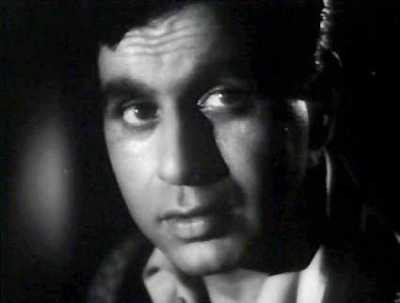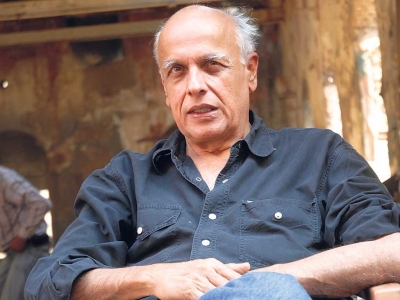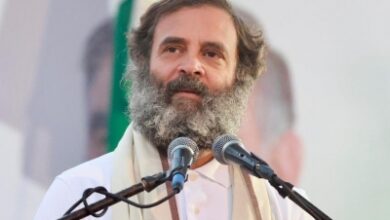From orchard scion to movie star: The evolution of Dilip Kumar, an Absorbing account of a man on his 100th Birth anniv

Mobilenews27x7 Bureau
With Yusuf Khan back in Mumbai and his Pune sojourn over, his major goal was to get gainfully employed or target new avenues of earning to share the family burden. He was blissfully unaware that lady luck was about to smile on him. The turn of events propitiously sequenced by providence was to catapult young Yusuf Khan into Dilip Kumar, the megastar of the then Bombay film industry now dubbed as Bollywood.
There are many versions of Dilip Kumar’s entry in the film industry but we shall recount here only the version we believe is the most authentic.
Yusuf commenced his endeavours in the city by helping his Agha ji in his fruits business. His ageing father was becoming rather frail, so Yusuf started travelling to the orchards in the hilly regions of Dehradun and Nainital in north India. Little did the young man know that one of these trips would be his springboard to filmdom and that too with the iconic Bombay Talkies Studios of Mumbai! This was circa 1943.
Bombay Talkies was among the three legendary film studios of the country in that era — Prabhat Studios in Pune and New Theatres Studios, Kolkata (then Calcutta), were the other two. Bombay Talkies was founded by the scion of a wealthy Bengali family and London-trained lawyer Himanshu Rai around the mid-1930s.
The studio employed well-trained British, German and Indian technicians and churned out highly successful and path-breaking films like ‘Achhut Kanya’ (1936), ‘Kangan’ (1939), ‘Bandhan’ (1940), ‘Jhoola’ (1941), ‘Basant’ (1942), ‘Kismet’ (1943), etc. Devika Rani, daughter of the surgeon-general of Chennai (then Madras), Colonel M.N. Chowdhury, and a niece of Rabindranath Tagore, was a student of the Royal Academy of Dramatic Arts, London, where she met Himanshu Rai, who invited her to work in his films.
Devika Rani thus became the First Lady of the Indian Screen. The two later got married. She acted in his films and together they founded the studio in 1935 as a joint stock company with a then huge capital base of Rs25lakh. It was established on the site of F.E. Dinshaw’s sprawling summer mansion in the then far-flung Mumbai suburb of Malad. The studio was designed and equipped on modern lines, complete with sound- and echo-proof stages, automated laboratory, editing rooms, preview theatre, a carpentry workshop and plenty of facilities for artists and the administrative staff.
The German technicians who had worked with Rai on ‘Light of Asia’, ‘Shiraz’ and ‘A Throw of Dice’ were brought together to supervise production and to train local talent. Franz Osten directed all the early Bombay Talkies films, while Hartley from Britain was the sound technician and Zollee the laboratory technician. Equipped with the latest machinery and manned by a highly skilled staff, Bombay Talkies set a standard in technical excellence unsurpassed by any other studio at that time. Unfortunately, Himanshu Rai died of a nervous breakdown at the age of 48 in 1940. The studio’s reins then shifted to Devika Rani, and by 1943, when Dilip Kumar was discovered, she was the boss.
Incidentally, Bombay Talkies became the grooming ground of the greatest names of filmdom, including actors Ashok Kumar, Dilip Kumar, Raj Kapoor, Dev Anand, Kishore Sahu; filmmakers Shashdhar (S.) Mukerji, Amiya Chakrabarty, Nitin Bose, Gyan Mukherjee, N.R. Acharya; writers Babu Bhagwati Charan Varma, Niranjan Pal, Saadat Hasan Manto, Pt. Narendra Sharma, Krishan Chandar; and music directors Saraswati Devi, Ramchandra Pal, Anil Biswas and S.N. Tripathi just to name a few.
It so happened that by a quirk of fate while Devika Rani and director Amiya Chakrabarty were location hunting in Nainital, Yusuf also was in the same hill station for a business deal. He had a chance meeting with Devika Rani and Amiya Chakrabarty and the lady liked his tall handsome Pathani looks as did Chakrabarty.
Yusuf was shocked that superstar Devika Rani was taking an interest in him. She gave him her card, saying, “Do call on me when you return to Bombay as I wish to discuss something with you.” Back in Mumbai, Yusuf was advised by his father to seek advice from one Dr Masani, a close family friend.
Yusuf, in the course of his conversation with Dr Masani, casually mentioned his meeting with Devika Rani in Nainital. Dr Masani, who was the personal physician of Devika Rani and her late husband as well as a family friend, advised Yusuf to meet her and offered to take him to Bombay Talkies. To cut a long story short, Devika Rani and Amiya Chakrabarty took Yusuf’s screen test and subsequently signed him up for ‘Jwar Bhata’ (1944) at a then astronomical monthly salary of Rs 1,000 plus Rs 200 as war allowance.
Rest, as they say, is history. Incidentally, Yusuf’s close friend and legendary actor-director Raj Kapoor was also then employed with Bombay Talkies as an apprentice at a meagre monthly salary of Rs140 only, and he even played a bit role in ‘Jwar Bhata’.
Dilip Saheb reminisces, “Bombay Talkies was the best thing that happened to me at that juncture in my life. I couldn’t have found a better job than the one offered to me by Devika Rani.” One of the first Bombay Talkies employees to whom Yusuf was introduced was the production manager Hitendra Chowdhury, who later had a lifetime friendship with the megastar.
Once Yusuf was formally inducted into the Bombay Talkies, the studio think-tank emphasised that he be given a different and more appropriate screen name. This pleased Yusuf as the new name would keep his joining films under wraps and Aghaji, who disliked filmi people, would not discover his son’s real profession. The celebrated litt�rateur Bhagwati Charan Varma suggested three alternative names — Jehangir, Vasudev and Dilip Kumar. Almost intuitively and instantly, Yusuf opted for the now famous screen name of Dilip Kumar.
Devika Rani saw to it that young Dilip got the right grooming within the Bombay Talkies Studios under the tutelage of its exceedingly talented experts, who were the best in the Industry. Strict discipline was enforced in the studio in terms of punctuality and adherence to the curriculum of training and work execution. Dilip Kumar was exposed to all elements of movie production, which became invaluable for him. He rubbed shoulders with legends like Ashok Kumar, S. Mukerji, Gyan Mukerjee, Frank Austen and his first director Amiya Chakrabarty.
Dilip Saheb recalls in his autobiography that the best and most useful acting tip he received was from Ashok ‘bhaiyya’ (as he addressed Ashok Kumar): “You are a handsome man and I can see that you are eager to learn. It is very simple. You just do what you would do in the situation if you are actually in it. If you act it will be acting and it will look very silly.”
On his rapport with the great Ashok Kumar, Dilip Saheb adds, “I met him every day and he treated me like a younger brother who had to be led and protected. My shyness and reticence began to recede in his company and his friendliness and affection for me were a fillip for me to be on the sets while the shooting of ‘Kismet’ was going on.”
Young Dilip got an opportunity to watch Ashok Kumar perform on the sets of the then under-production film ‘Kismet’ and it was a great education for him. The best talents were employed by the studio, each a master of his or her own field. They would all sit together and share their thoughts and exchange views on the songs, dialogue, music, filmmaking, camera handling, editing, direction, lighting, etc. It was a stimulating experience for young Dilip who got to learn about filmmaking in all its varied facets, including, of course, acting.
Ashok Kumar introduced Dilip Kumar to his brother-in-�law S. Mukerji, a doyen of filmmaking who later founded the iconic studios — Filmistan and Filmalaya — and made innumerable box-office hits. Dilip Saheb’s proficiency in the Urdu language came handy in impressing Mukerji, an intelligent, well-read and polished gentleman, who taught him finer nuances of filmmaking.
Dilip Saheb regaled Ashok Kumar and S. Mukerji with Urdu as well as Farsi (Persian) verses after pack-up. A deeply impressed S. Mukerji then insisted on Dilip participating in the story-dialogue sessions of the studio with legends like Amiya Chakrabarty, Gyan Mukherjee, Krishan Chandar and others. This experience was very enriching for the young Dilip. He got the ‘mool mantra’ (basic principles) of emoting effectively, which was that he would have to arrive at the business of simulating feelings and conveying emotions on his own. Seeds of the evolution of the later much-eulogised Dilipian brand of histrionics were sown.
Surprisingly, until this point in time, Dilip Kumar had not seen a single full-length Hindi feature film. At the advice of S. Mukerji, he started viewing movies particularly, those made in Hollywood. He especially liked the performances of legendary actors and actresses like Paul Muni, Clark Gable, Ingrid Bergman, Jimmy Stewart, Charles Laughton, etc. Studying their acting styles by minute observation, Dilip Kumar got ample exposure to the different approaches of the pastmasters of the craft and began shaping his own acting methods.
After this protracted training stint, Dilip Kumar finally donned make-up for the first time and started shooting for his debut film ‘Jwar Bhata’ in May 1943, under the expert watchful eyes of director Amiya Chakrabarty. The evolution of the actor Dilip Kumar had commenced.
In a candid interview published by ‘Filmfare’ on January 17, 1969, Dilip Saheb went on to state the following regarding the evolutionary phase of his career:
“In Bombay Talkies where I started my career, we had to do much more than just don make-up and report for work. We had to frequently and often repeatedly see good films, discuss the work of other artistes, read books on acting, drama, criticism. We were all a very close-knit family — writers, directors, producers, technicians and artistes. Often there would be a lively debate and we could always take our problems to our more experienced seniors.
“Those institutions are, alas, no more. Filmmaking today has become the forte of dealmakers. Younger artistes are being nurtured in a highly mercenary and ruthless climate. They are relatively smarter and shrewder than we were but their efforts are stunted and they fail to set new standards of their own. The number of assignments is today considered an actor’s prestige symbol.”
Book excerpts :’Dilip Kumar – Peerless Icon Inspiring Generations: The Life And Times Of The Legendary Actor’






